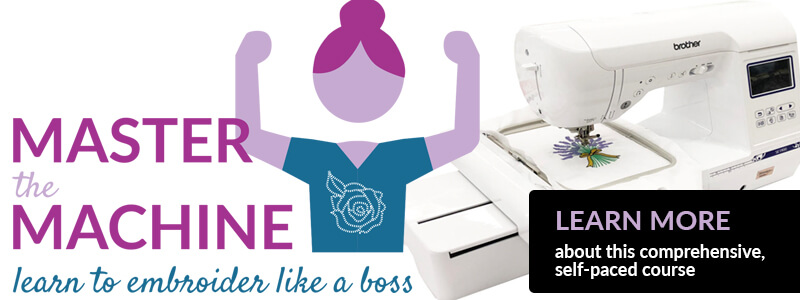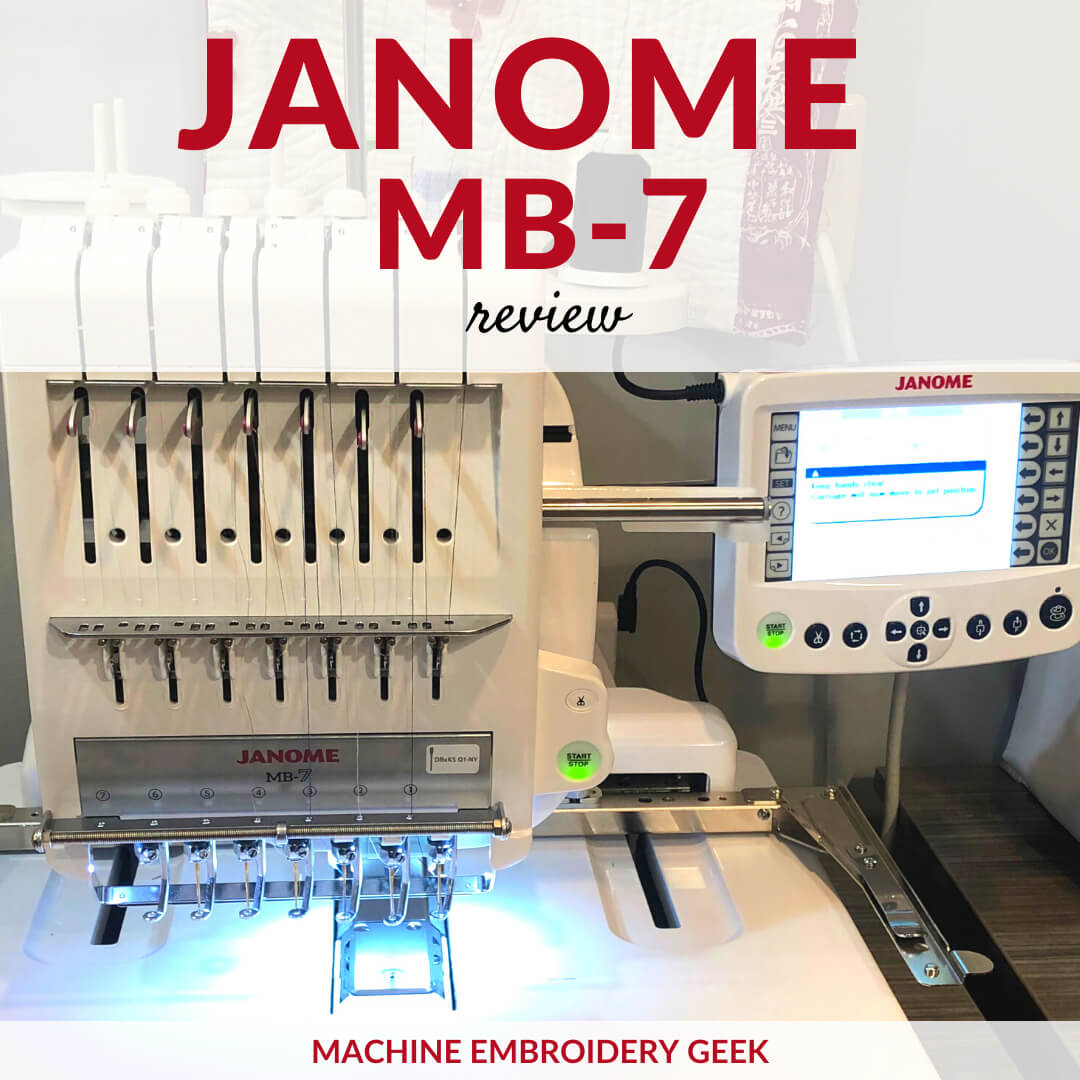Why are my needles breaking on my embroidery machine?
This site contains affiliate links to products. We may receive a commission for purchases made through these links.

I sit there, mesmerized, watching my embroidery machine do its thing… happily humming along, then suddenly – POP – the needle breaks. After a brief moment of gratitude that the needle tip did take my eye out, and carefully disposing of the tip before it ends up in my foot, I change the needle and start again and wonder why are my needles breaking?
What causes a needle to break on an embroidery machine?
Having the needle break in the middle of stitching out an embroidery design is super annoying, especially if it happens repeatedly. Usually I have a good idea as to why my needle broke, and it’s almost always due to something dumb that I’ve done. For example, if I’m not watching my embroidery machine like a hawk, sometimes my sulky overlay gets bunched up and I end up with a big ball of sulky underneath my presser foot that my needle can’t get through and BAM it snaps.
But there are other the times when it’s not exactly clear why the needle is breaking which is SUPER FRUSTRATING, because just don’t know what to fix. So, I did a bunch of research to identify some of the key culprits that can cause a needle to break, and I’ve assembled a list of 11 answers to your question: “why are my needles breaking on my embroidery machine?”
Reasons why your needle is breaking while you are using your embroidery machine.
- The embroidery needle size. The most typical needle size used in machine embroidery for mid-weight fabrics is 75/11. If you are embroidering something heavier like leather or denim, you should move up to a heavier needle, like 90/14s.
- The embroidery needle type. Make sure you are using needles specifically for machine embroidery. It makes a difference
- The embroidery needle brand. Embroidery machines are finicky; some like Schmetz needles, some like Organ. Experiment using different needles and see which one your machine likes better. While it’s hard to see the disparities between needles, subtle differences can have a big impact. For example, Schmetz embroidery needles actually have the smallest eye of all the embroidery needle brands, therefore the thread can’t move around as much which can be beneficial when you are stitching with slippery polyester thread.
- The embroidery needle material. Most needles are made of chrome plated steel. However, there are titanium needles available which are really strong. They cost a bit more than standard needles but typically last longer.
- The embroidery needle installation. Is your needle installed correctly? The flat part of the needle should always be facing towards the back of the machine. Also, the screw that holds the needle in place can be loose which can cause the needle to wobble around. Make sure it is tight. And finally, it could be that the needle isn’t installed as far in as it should be; push it up until it won’t go any further.
- The embroidery needle condition. Check to see if your needle is warped. If your needle does not appear perfectly straight, it’s time to replace it. A warped needle can go down on the presser foot which will cause it to break.
- The way the embroidery machine is threaded. Check that your thread isn’t getting caught up or snagging on anything as if flows through your machine. The tiny slot on the thread spool can catch your thread and prevent it from flowing properly. It has to be turned away from the line of thread feeding. Even if you don’t see an immediate problem with the threading, turn machine off and unthread it, and be sure to thread the machine with the presser foot up. The added tension can cause issues. Then, turn it back on so everything inside re-sets.
- Consider investing in a thread stand. Moving your spool away from the machine on a thread stand can help tremendously in preventing the thread from getting snagged. If your machine has a cap to hold the thread in place, be sure to use it as it helps to prevent snags.
- The embroidery design. If your needles are breaking repeatedly on the same design, it may be a design flaw. The digitizer might have left too many layers of stitching in one spot, making it very dense, causing the needles to break. If you suspect this is the problem, contact the digitizer. She can easily fix it.
- The embroidery machine speed. Needles can bend on heavier fabric at fast speeds. And once they are bent, they break quickly.
- The embroidery machine tension setting. If your tension is too tight, it can cause the needles to break.
- The embroidery machine bobbin. Make sure the bobbin is the right way and it is threaded properly. Until I knew better, I was putting my bobbin in the bobbin cage backwards and I would frequently break needles because the bobbin thread was not feeding properly.
How to recover your project when your embroidery machine is not cooperating
Sometimes the secret to solving your needle breakage problem is to resist the urge to try to solve the problem immediately and simply walk away. You’ll have fresh eyes and more patience the next day. Make note of where you were in the stitch count if you are in the middle of stitching out a design. Then turn the machine off and leave it. You can simply restart the design at the count where you left off.
Oh – and be sure to stock up on needles! They should be replaced every 8-10 hours of embroidering whether they break or not. You can buy Schmetz and Organ needles in bulk on Amazon for pennies a piece.
Good luck & happy embroidering!
Julie





















I like what you said about making sure that your tension setting isn’t too high on your embroidery machine. My sister has been telling me about how she wants to get into embroidery in the coming weeks. I’ll share this information with her so that she can look into her options for getting the right tools for the job.
Great Information complied in one article for beginners as well as for experts too. Thanks for sharing.